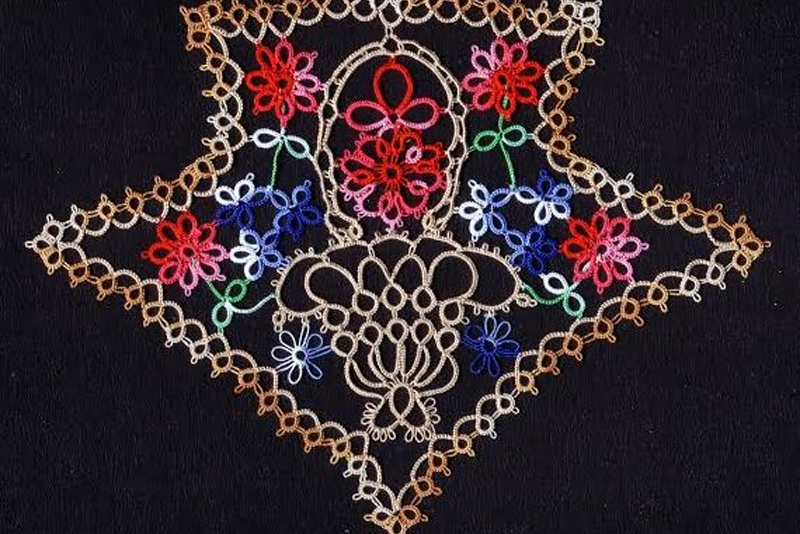Patterns #433, 434, 435, 436 of pgs. 22-23, 27
Many vintage patterns are in the public domain now. These four are presented courtesy of Coats and Clark, Inc.
They are all dainty and decorative but #436 presents a challenge to modernize into a one pass pattern.
The original booklet cover:

The original pattern page:

The detailed enlargement of #433 and 434 showing two edging which are simple and dainty. These can be tatted by the mile in one or two colors. Beads would be an excellent addition also

And here is the double stitch count for both.

Suggested method of work.
Pattern #433.
Using needle and ball or shuttle and ball or two shuttles, thread beads first if they are to be used.
R 4 - 4 - 4 - 4 clr rw. (Note this center picot will have two joins made to it later.)
CH 6 - 14 rw
*R 8 + (join to picot of first ring) 8 clr rw
CH 14 - 6 rw
R 4 - 4 + (join to same picot) 4 - 4. DNRW.
CH 4 - 4 DNRW
R 4 - 4 - 4 - 4 clr rw
CH 6 + (join to picot of previous chain) 14 rw
Repeat from * from desired length.
Questions?
1. When a picot is to be used for multiple joins, it may need to be larger. For a tight join make it petite.
2. Adjust the second and additional rings by sliding so they are evenly spaced on the picot. 3. DNRW before and after that small chain changes the direction in which it curves.
Refer again to this photo for #434

Pattern #434.
Using needle and ball or shuttle and ball or two shuttles, thread beads first if they are to be used.
These three ring clusters are mirror images of each other.
Begin with the right side cluster with the ring following the shortest chain.
*R 11 - 8 - 3 clr DNRW. Leave no bare thread space.
R 3 + (join to last picot of first ring) 8 - 8 - 3 clr. DNRW Leave no space.
R 3 + (join to last picot of second ring) 8 - 11 clr rw.
CH 17 + (join to picot of previous ring) 18 rw
R 8 - 3 - 11 clr rw
CH 17 rw, + (join to picot of previous ring)
R 3 + (join to second picot of previous ring) 8 + (join across to middle picot of center ring of previous cluster)8 - 3 clr DNRW Leave no space.
R 3 + (join to last picot of previous ring) 8 - 11 clr rw
CH 10 rw.
Repeat from * for desired length.
Questions?
1. The picot join between the first and last rings should not be too large. But the join between two sets of clusters should not strain the picot.
2. The DNRW between the rings of the first cluster (right side) will keep any gaps of thread from forming for a tight join.
Enjoy!
Here's the latest article from the Tatting site at BellaOnline.com.
Coats&Clark 138 edging 436 A dainty and decorative edging but this #436 pattern presents a challenge to modernize it into a one pass pattern.
http://www.bellaonline.com/articles/art306069.asp
To participate in free, fun online discussions, this site has a community forum all about Tatting located here - http://forums.bellaonline.com/ubbthreads.php?ubb=postlist&Board=39 I hope to hear from you sometime soon, either in the forum or in response to this email message. I thrive on your feedback!
Have fun passing this message along to family and friends, because we all love free knowledge!
Georgia Seitz, Tatting Editor http://tatting.bellaonline.com One of the hundreds of sites at BellaOnline.com







